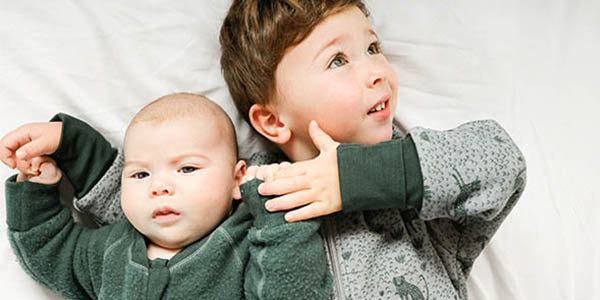
Cold Night Wake-ups in babies and young children
Have you ever gone in to resettle your little one at night, only to find that they have kicked off all their blankets and their feet are chilly? If your child is waking up between the hours of 3-4am, chances are, they are waking up because they are cold.
There are two things that work against young children when it comes to the cold:
- They have difficulty regulating their own body temperature, which means they can get hot very quickly, or cold very quickly. Sometimes, this can put them at risk of overheating or of being too cold.
- They like to wriggle in their sleep and are prone to kicking their blankets off. Once asleep, a child under the age of 5 does not instinctively know to pull the blankets back on. This leaves them exposed and vulnerable to the cold.
Given these factors it is very common for cold-night wake ups to occur, particularly in the early morning when there is a dip in temperature.
Keeping your child warm and comfortable is the solution to ending unnecessary cold night wake ups.
Here are 4 key tips to keeping your child warm in winter:
1) Know your layers
Layering is the key to keeping your child warm at night.
Wearing multiple layers will keep your child warmer than a single thick layer because the layers are better at trapping warm air in and maintaining heat.
Dressing your child in multiple layers of clothing also allows you the flexibility to add or remove layers when the temperature changes. In the late evening when the house is warm from sunlight or heating, you can start with a lightweight layer and then slip additional layers on as the temperature drops later in the night. Or, as your child gets warmer you can remove layers to help cool them down.
A good rule of thumb is to use 3 essential layers:
The Base Layer: This is the layer that sits against your child’s skin. For this, choose a fabric like merino wool that will wick moisture away from the skin. Keeping their skin dry is essential to staying warm. A Merino pyjama layer is ideal for this as it is lightweight and the superfine fibres make it comfortable to wear against the skin.
The Middle Layer: The purpose of this layer is to insulate. For this, choose a slightly heavier weight fabric to help keep and retain warmth. A Wearable Blanket Sleepsuit or a Sleeping Bag in Merino wool is excellent at providing warmth without being bulky.
The Top layer: For extreme cold, your child will need an exterior layer to protect them from the dipping temperature. As an outer garment, it has to be comfortable for your child to sleep in. Knitted sleepwear, such as a Knitted Body Warming Vest is the ideal option because it is great at keeping the core of the body warm, but as a sleeveless garment, it is easy to remove and put on while they are asleep.
2) Choose the right fibre
When layering, it’s a good idea to choose natural fibre clothing because they are breathable and will be more comfortable to wear.
However, not all natural fibres are the same.
Cotton is a popular natural fibre in children’s sleepwear however; it is a very poor option as a base layer in winter for two reasons:
- It has very poor thermal properties – it does not retain heat well.
- Cotton does not help to keep your child’s skin dry.
Cotton absorbs and holds onto moisture, meaning once your child starts to sweat, the sweat will stay trapped in the fibre for longer. The build up of moisture is what draws the heat away from the body leaving it to feel cold.
Merino wool is the ideal fibre to use as layering options for children’s sleepwear for 2 reasons:
- Merino wool is a natural breathable fibre, that wicks moisture away from the body. Once your child starts to sweat in their sleep, the merino fibre will draw the moisture away helping them stay dry.
- Merino wool also has excellent thermal properties, meaning it holds in heat.
Merino wool hairs have a crimp, which helps to create a natural loft in the fabric, allowing tiny pockets of air to be trapped, providing better insulation.
This unique ability to keep the skin dry and retain heat makes merino wool the ideal fibre to use for all 3 levels of layering: the base, the middle and the top layer.
3) Check your child
Your child is likely to fall asleep a few hours before you go to bed so the best time to check on them is before you do.
A simple way to check their body temperature is to place your hand on the skin of their chest, tummy or back. Their skin should feel dry and warm to touch. If they feel too warm, remove a layer where possible. If they feel cold, you can attempt to add a top layer.
Checking their skin temperature and adjusting the layers will help them be protected from the cold when the blankets come off and the temperature drops later in the night.
4) Pay attention to Tog rating
Whether the clothing is made of Merino wool, cotton or polyester it will have an associated tog rating. A tog is the rating a sleep garment is given to indicate the amount of warmth it provides – the higher the rating, the warmer the garment is. When choosing your baby’s sleepwear, it is important to layer to suit your child’s room temperature. Following the tog rating and temperature guide for each garment will help ensure your child is dressed adequately for the weather to put an end to the cold night wake-ups.
